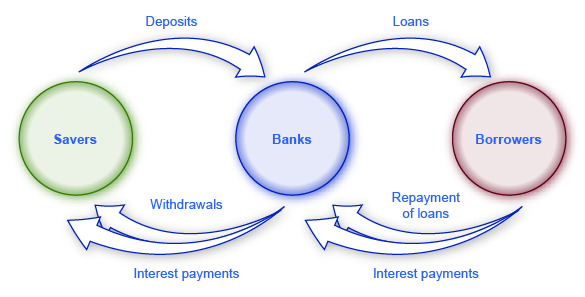| << Chapter < Page | Chapter >> Page > |

Banks have a couple of close cousins: savings institutions and credit unions. Banks, as explained, receive deposits from individuals and businesses and make loans with the money. Savings institutions are also sometimes called “savings and loans” or “thrifts.” They also take loans and make deposits. However, from the 1930s until the 1980s, federal law limited how much interest savings institutions were allowed to pay to depositors. They were also required to make most of their loans in the form of housing-related loans, either to homebuyers or to real-estate developers and builders.
A credit union is a nonprofit financial institution that its members own and run. Members of each credit union decide who is eligible to be a member. Usually, potential members would be everyone in a certain community, or groups of employees, or members of a certain organization. The credit union accepts deposits from members and focuses on making loans back to its members. While there are more credit unions than banks and more banks than savings and loans, the total assets of credit unions are growing.
In 2008, there were 7,085 banks. Due to the bank failures of 2007–2009 and bank mergers, there were 5,571 banks in the United States at the end of the fourth quarter in 2014. According to the Credit Union National Association, as of December 2014 there were 6,535 credit unions with assets totaling $1.1 billion. A day of “Transfer Your Money” took place in 2009 out of general public disgust with big bank bailouts. People were encouraged to transfer their deposits to credit unions. This has grown into the ongoing Move Your Money Project. Consequently, some now hold deposits as large as $50 billion. However, as of 2013, the 12 largest banks (0.2%) controlled 69 percent of all banking assets, according to the Dallas Federal Reserve.
A balance sheet is an accounting tool that lists assets and liabilities. An asset is something of value that is owned and can be used to produce something. For example, the cash you own can be used to pay your tuition. If you own a home, this is also considered an asset. A liability is a debt or something you owe. Many people borrow money to buy homes. In this case, a home is the asset, but the mortgage is the liability. The net worth is the asset value minus how much is owed (the liability). A bank’s balance sheet operates in much the same way. A bank’s net worth is also referred to as bank capital . A bank has assets such as cash held in its vaults, monies that the bank holds at the Federal Reserve bank (called “reserves”), loans that are made to customers, and bonds.

Notification Switch
Would you like to follow the 'Principles of economics' conversation and receive update notifications?